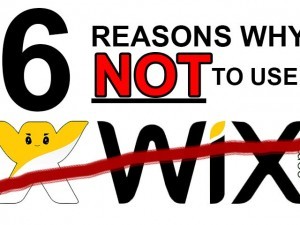
Now you know how to improve your email deliverability, it’s time to understand the numbers behind those emails that you send.
However, for all the simplicity of email marketing, there are a whole lot of intricacies involved in making sure that the emails you send out actually work and convert into real interactions and engagements for your business.
Remember that more than 306 billion emails are sent and received each day, so capitalizing this market is very important.
One of those intricate parts of email marketing is statistics: what does my mailing list do? What open rates can I expect? What click rates can I expect? Do some articles get more engagement than others? And why is this happening?
In order to answer these questions as best as possible, there are a few things you need to keep in mind.
In this chapter, we will discuss how we can use these statistics in our marketing funnels. We’ll go through several examples below.
Email Statistics: What Information Are We Talking About?
Open Rate
The open rate is calculated by dividing the number of times someone opened an email by the total number of emails delivered.
For example, if you sent out 10,000 emails and 100 of them were opened, your open rate would be 1%. If only 6 people out of 10,000 are opening your emails, then you have a pretty poor conversion rate on your hands.
A rule of thumb when it comes to open rates is that anything less than 20% is considered really bad. Anything between 20-40% opens, lands squarely in the “meh” range.
As with all stats in marketing, there are always caveats.For example, some email lists are more likely to open emails than others.
If you have a list of 10,000 people who are all used to getting ‘shouting’ emails for many different topics that overlap with yours then their general perception of what is or isn’t appropriate will be pre-conditioned.
They may be less likely to report your email as spam because it feels familiar.

Click Rate
The click rate is calculated by dividing the number of times someone clicked on a link inside an email by the total number of emails delivered.
Just like open rates, click rates can be very misleading if you do not understand how people act when they receive marketing messages (or marketing-related messages).
For example, it is very common for people to click on an email they aren’t interested in just so that they can unsubscribe from the mailing list with a single click. Or maybe someone clicked on your email because of an emotional reaction rather than any real interest in what you were selling.
Having good copywriting skills and knowing how to write subject lines that generate curiosity is critical when trying to figure out how much weight should be placed on both open rates and click rates.
Unsubscribe Rate
The Unsubscribe Rate is calculated by dividing the number of times someone clicked the Unsubscribe link (or mark your email as spam or junk) by the total number of emails delivered.
This particular rate is extremely important because if someone doesn’t like what you are sending them (or even if they mistakenly think you are spamming them) then it is very likely that they will click on the link at the bottom of an email which says “unsubscribe” or report your email as spam.
If people keep clicking on this link, there’s a good chance that Google might pick up on this behavior and lower your search engine position. If enough people unsubscribe over time, the chances of new subscribers signing up will also go down which will lead to less overall revenue in the long run.
Bounce Rate
Bounces are basically error messages that say something like “the email you sent could not be delivered because Gmail thought it was spam.” Everyone gets these kinds of errors once in a while, but if your open rates and click rates are low then there’s a good chance that most or all of these bounces were due to technical bugs rather than user behavior.
List Growth Rate
The List Growth Rate is calculated by dividing the number of new subscribers over a period of time (e.g. one month) by the total email list size at the beginning of that same period.
If you have a 3% growth rate, this means that your company is growing at around 30 people per day on average. If this number drops to 2%, then it’s likely that something went wrong and many potential customers are now opting out from receiving emails from you or having their address straight up removed from your database.
Using Email Statistics for Future Campaigns
Once you know our average open and click-through rates you can start looking through our CSV files and finding out where you spent the most money in regards to getting new subscribers.
Once you pinpointed what ad source has been providing you with the best results over time as well as how much money was spent on a per subscriber basis, you can start relying on it more and increase your ad budget.
What’s the point of this exercise?
Well, let’s say that your average open rate is 20% then all you need to do is take the average amount of money spent per email click and divide it by 0.2 in order to get an idea about how much should be spent in total during each campaign sent out through a certain ad source.
Why Understanding Email Statistics Is Important?
Your email marketing campaign will be a lot more successful if you measure and adjust your ad spendings in such a way that it resonates with your target audience. If you keep spending $1 per click but the average open rate is only 5%, then most of your money is going to waste and you won’t get many new subscribers until something changes.
Email statistics should not be used as the only metric when evaluating the success of an email marketing campaign, they should rather serve as additional data points which can provide you with insightful information about potential issues you might encounter in the future.
Conclusion
Of course, there are other aspects that might affect our overall sales funnel such as: how easy it is for someone to browse through your website, whether or not they find it relevant and so on but once you know our email statistics you will have much better chances at figuring out how to improve them before sending new campaigns to our subscribers.
That’s about it for this chapter, see you next time. If you want to learn more tips on email marketing, check out DBwebs today.







